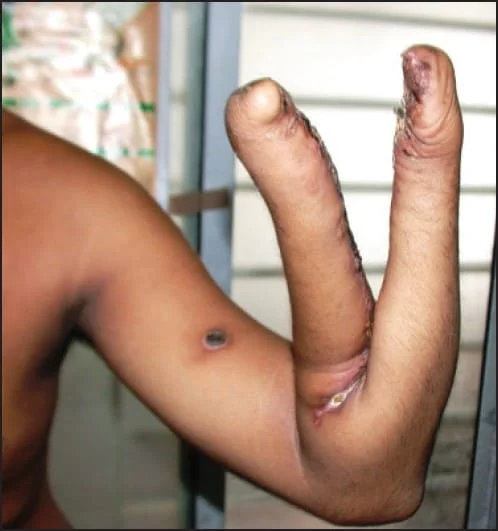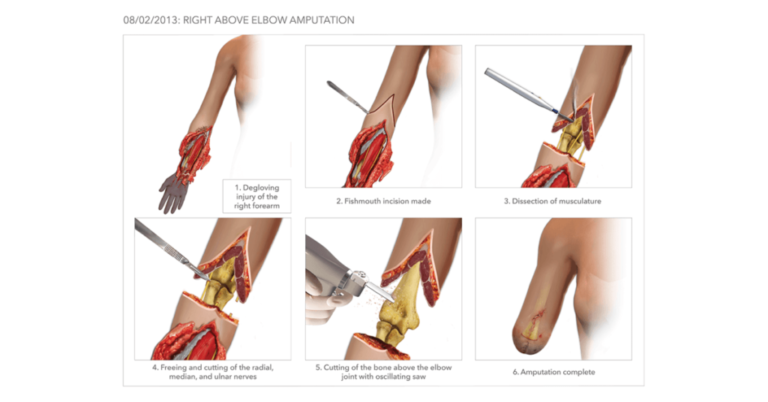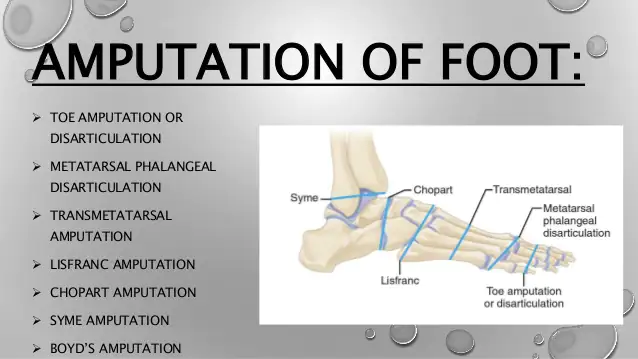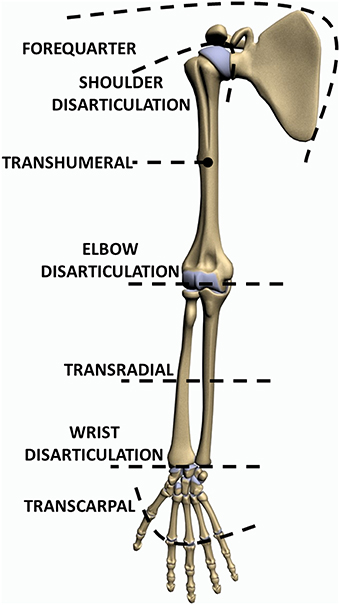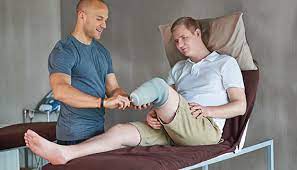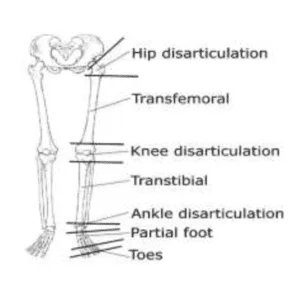Krukenberg Amputation: Advantages, Multidisciplinary Team, Responsibilities of the team? Prosthesis, Complication
Table of Contents
Introduction of Krukenberg amputation
Krukenberg amputation is performed in patients, usually with both sides below-elbow amputation, who have a sufficiently long below-elbow stump. In this type of operation, the forearm is split between the ulna and the radius to provide the pincer grip.
The amputated patient can hold the spoon or such lighter objects with this “fork”. in the case of cosmetic purposes and for lifting heavy objects a below-elbow prosthesis or a “hook” prosthesis, respectively, can be put over this stump.
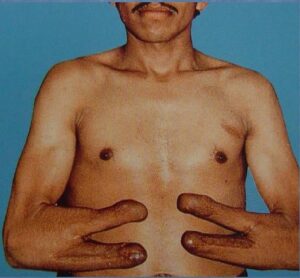
Definition of Krukenberg amputation:
a cineplastic amputation at the carpus with the distal end of the forearm used to create a forklike stump between the ulna and radius; especially valuable in the blind because the stump has proprioception.
Advantages of Krukenberg amputation:
The Krukenberg procedure is, in this time and age, mostly performed on people in developing countries who lack the means to obtain expensive prostheses. It has been used extensively in the context of deliberate amputations as seen in the atrocities Sierra Leone civil war. In the Western world, the Krukenberg operation is usually reserved for blind patients with bilateral amputations, because it can provide the patient with tactile sensation.
While the Krukenberg procedure’s poor cosmesis makes it very rare, it does preserve proprioception and stereognosis sensation in the functional stump and so allows for effective maneuvering. Once this procedure is performed, it does not preclude the use of a functional prosthesis giving the amputated patient the option to use either functional strategy.
While the procedure is rarely performed in the modern age, patients can prefer it to sophisticated prosthetics
Multidisciplinary Team:
- podiatrist
- microbiologist
- nurse
- orthopedic surgeon
- vascular surgeon
- Physiotherapy
- Occupational therapy
What are the responsibilities of the team?
- Evaluate the patient
- Ensure the medical stability of the patient
- Prepare the patient’s life as an amputee
- Prescribe prosthesis (if appropriate)
- Fabricate prosthesis
- Evaluate the fit of the prosthesis Educate the patient about how to use and care for the prosthesis
- Follow-up care for the patient
Physiotherapy treatment for Krukenberg amputation :
- Psychological counseling to the patient
- Psychological support
- Providing information is important
- to reduce the patient’s and the family members’ anxiety
- obtain cooperation in the treatment program
- to help the person with a Krukenberg amputation to adjust his new condition.
- Feeling a complete change in reality due to a lack of functional activities
Breathing exercise :
to prevent the accumulation of fluid
to prevent chances of infections
Postural advice during sitting, standing, and walking
Active ROM :
- Cervical spine:
- Flexion
- Extention
- Right side rotation
- Left side rotation
- Right side flexion
- Left side flexion
Active exercise of Krukenberg amputation in the upper limb:
- Glenohumeral joint :
- Flexion
- Extention
- Abduction
- Adduction
- Internal Rotation
- External Rotation
- Scapula:
- elevation
- depression
- protraction
- retraction
- Elbow :
- Flexion
- Extention
Active exercise of normal upper limb extremities :
- Glenohumeral joint :
- Flexion
- Extention
- Abduction
- Adduction
- Internal Rotation
- External Rotation
- Scapula:
- elevation
- depression
- protraction
- retraction
- Elbow :
- flexion
- Extention
- Forearm:
- Supination
- pronation
Strengthening Exercise:
Strengthening Exercise: Strengthening Exercise of Neck Flexors, Extensors, Rotators, side flexors, and Scapular muscles (rotator cuff muscles, teres major, subscapularis, teres minor, and infraspinatus), Biceps, triceps, Deltoid muscle
Strengthening exercise can be done manually, theraband, and by weight cuff
The physiotherapist will:
Teach donning (putting on) and doffing (taking off) the prosthesis of Krukenberg amputation.
Build up muscle strength and power.
Teach coordination skills that will assist with activities of daily living such as dressing, washing, eating, etc.
Try to address any obstacles that may prevent a return to work and previous hobbies of patients
Prosthesis For Bilateral Krukenberg Amputation:
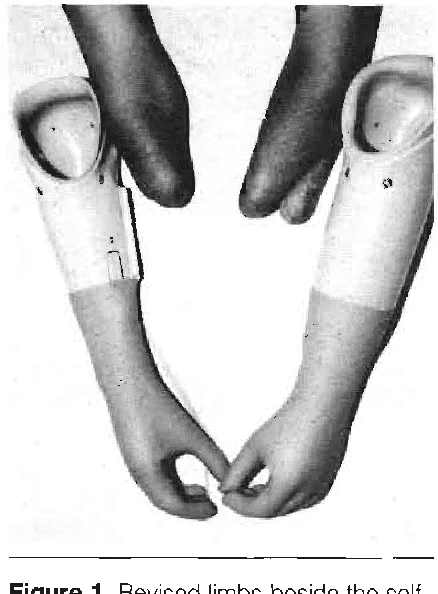
Complication of krukenberg amputation:
- Excess bleeding
- Blood clots
- Edema
- Poor healing
- Deep vein thrombosis (DVT)
- wound infection
- pneumonia
- “phantom limb” pain
- depression
- Stump ulceration
- Flap necrosis
- Joint stiffness
- Osteomyelitis
- Osteoporosis

